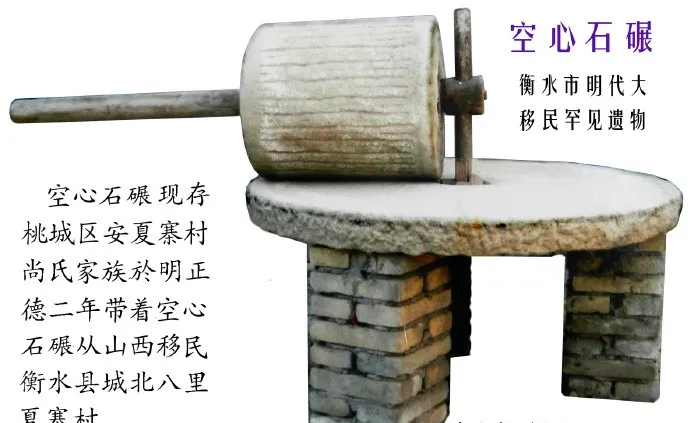In the urban and rural areas of Hengshui area, there has been a traditional "stone mill" since ancient times, which is the original tool for processing grain. The original stone mill was installed with a square wooden frame outside the stone brick to drive the mill to roll on the circular mill plate. However, during the "Great Migration" period of the Ming Dynasty, the Shang family brought hengshui from Hongdong County, Shanxi Province, and the stone mill was chiseled from the middle and turned on a wooden pole on a disc, which belonged to the grain processing tools with local characteristics commonly used in various urban and rural areas of Shanxi Province. The only unique "stone mill" in Anxiazhai Village, Taocheng District, belongs to the ancestral household utensils of the Shang family, which has been used for more than 500 years and can still be used.
As of 2017, Shang Jiuqing and Shang Yanming, shang villagers in Anxiazhai village, are both members of the former Qing Dynasty Pingnan Wang Shangkexi, and the thirteenth and fourteenth direct descendants of the Shang clan Hengshui branch.

At the beginning of the Ming Dynasty, as many as one million immigrants moved to all parts of the country through the Big Locust Tree in Hongdong County, and their length, scale and influence were not only unprecedented in Chinese history, but also rare in the history of world migration. This had a broad and far-reaching impact on the Ming Dynasty at that time and on the later social development.
The existing "hollow stone mill" in the style of Hongdong County, Shanxi Province, is actually the only tool that witnesses the tragic and magnificent course of the "Great Migration" more than 400 years ago...
Source: Kang Zhanying Blog
From hengshui Lingyange public number